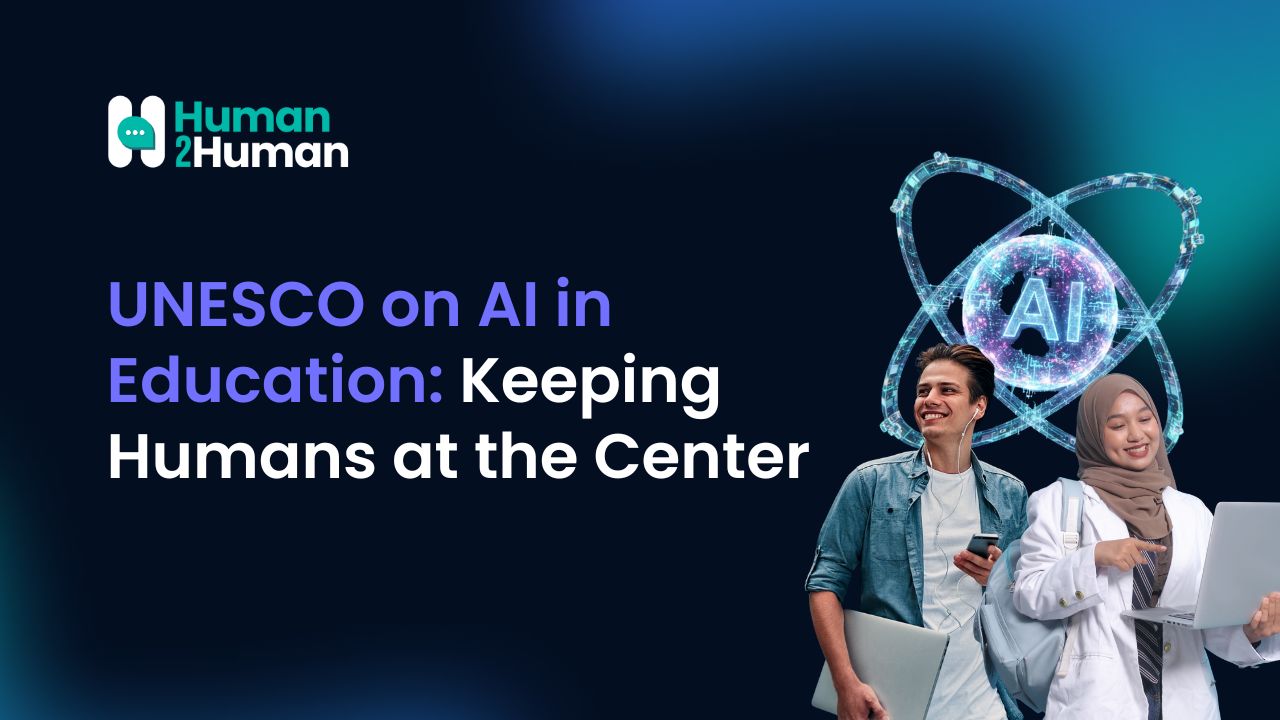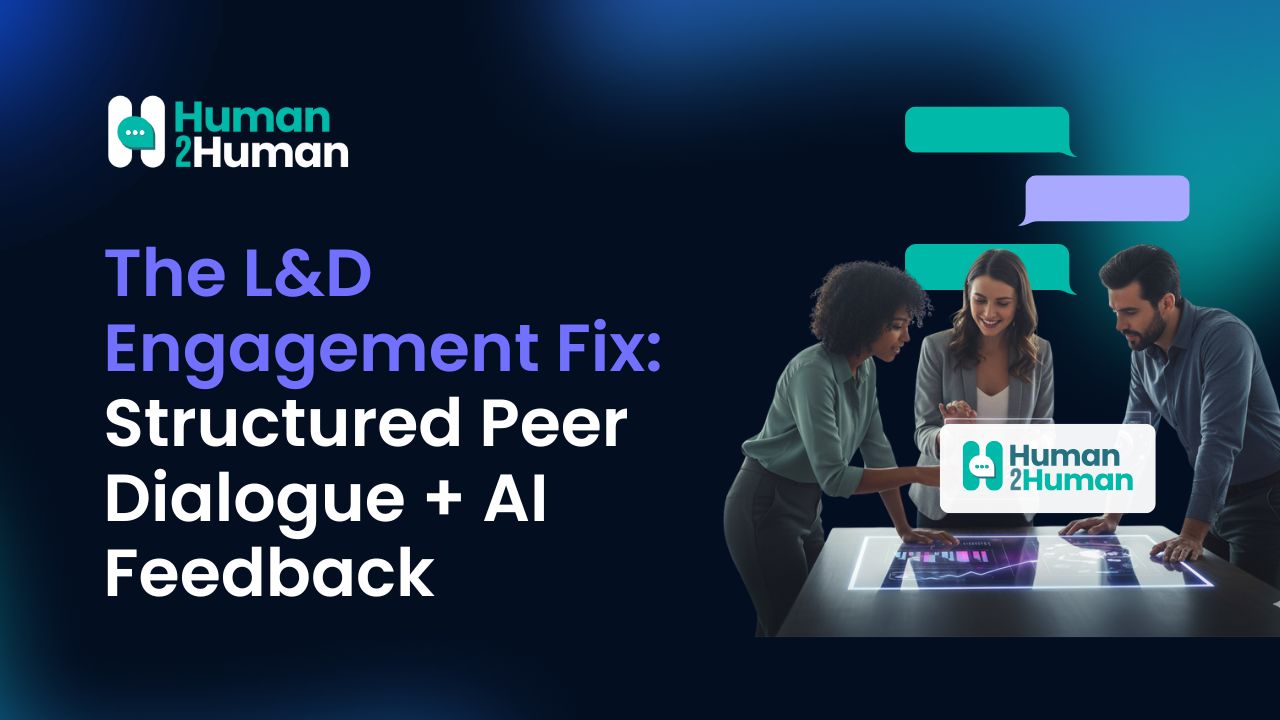UNESCO just released “AI and the Future of Education: Disruptions, Dilemmas, and Directions.”
It’s not techno-hype, but a clear call to keep human learning at the center of AI adoption in education.
Some key highlights:
- Equity first. AI access and language dominance risk widening gaps unless systems are designed for inclusion from the start.
- Beyond automation. UNESCO urges a shift from efficiency-only tools toward designs that uphold teacher agency, learner belonging, and care — not just personalization sliders.
• Build capacity. Make AI literacy foundational for students and educators. - Rethink assessment. Move away from surveillance-style correctness toward reflection, dialogue, and authentic evidence of learning.
Where we fit at Human2Human.ai: we’re building AI that amplifies the human side of learning — structured, real-time peer dialogue, educator-defined rubrics, and timely feedback at scale. Human-centered by design.
General Summary of the UNESCO Report
The document argues that AI in education is a disruptive force that brings both opportunities and deep dilemmas. It is not only about new tools but about a structural shift in how we understand learning, the role of the teacher, and the construction of knowledge.
Access and equity gap
One-third of humanity remains offline, while access to the most advanced AI models is limited to those with infrastructure, subscriptions, and linguistic advantages.
This risks making education systems reflect the asymmetries and values of dominant actors.
AI as an educational “actor”
AI is no longer just a tool: it functions as a personal tutor, emotional “companion,” or even professor avatar. This generates possibilities, but also questions the authenticity of the educational experience.
Ethical and pedagogical dilemmas
Risk that learning becomes superficial (cognitive offloading).
Concerns about privacy, bias, loss of critical thinking, and dominance of certain languages/cultures.
A warning against hyper-personalization that could isolate learners and weaken the social dimension of education.
New pedagogies and assessment
AI challenges traditional assessment systems (essays, standardized tests).
It can enable more continuous, formative, and personalized assessments, but with risks of inequity if access to tools is uneven.
Central role of teachers
The report stresses that AI should not replace teachers.
Teachers should lead integration, using AI to cultivate empathy, collaboration, and reflection.
Governance and ethics
Proposes a framework of “ethics of care by design”: include teachers, students, and communities in the design of educational AI systems.
Criticism of models that prioritize efficiency and control over democratic values, inclusion, and justice.
Inclusion and diversity
Strong emphasis on developing contextualized, multilingual AI sensitive to marginalized cultures and communities (e.g., students who are deaf, young women in the Global South).
Key Points for Human2Human.ai (H2H)
When cross-referenced with the H2H articulated story:
Equity and participation
UNESCO highlights the risk of isolation. H2H addresses this by ensuring equitable participation in group discussions through AI facilitation.
Centrality of teachers
UNESCO calls to revalue teachers. H2H does not replace them but gives them tools to design, monitor, and enhance interactions, fully aligned with this principle.
Collaboration vs. hyper-personalization
While UNESCO warns about isolating hyper-personalization, H2H promotes structured collaborative learning, strengthening community and critical thinking.
Formative assessment and feedback
The report advocates transforming assessment. H2H already offers custom rubrics and automated feedback, aligned with UNESCO’s vision for richer, more human-centered evaluation.
Inclusion and multilingualism
UNESCO stresses the need for contextualized AI. H2H supports multilingual interaction and flexible parametrization, positioning it strongly in diverse contexts.
Ethics and governance
The “ethics of care by design” principle resonates with H2H’s focus on data security, transparency, and teacher-defined evaluation criteria.
✅ Conclusion:
The UNESCO report validates the importance of platforms like H2H that foster collective, inclusive, teacher-guided learning, with AI as a facilitator of interaction and equity, not as a human substitute. In addition, the emphasis on transformative assessment, multilingualism, ethics of care, and bridging access gaps are areas where H2H can strategically position itself.
Turn global insights into real impact. Explore Human2Human and start building meaningful learning experiences, Get started.


